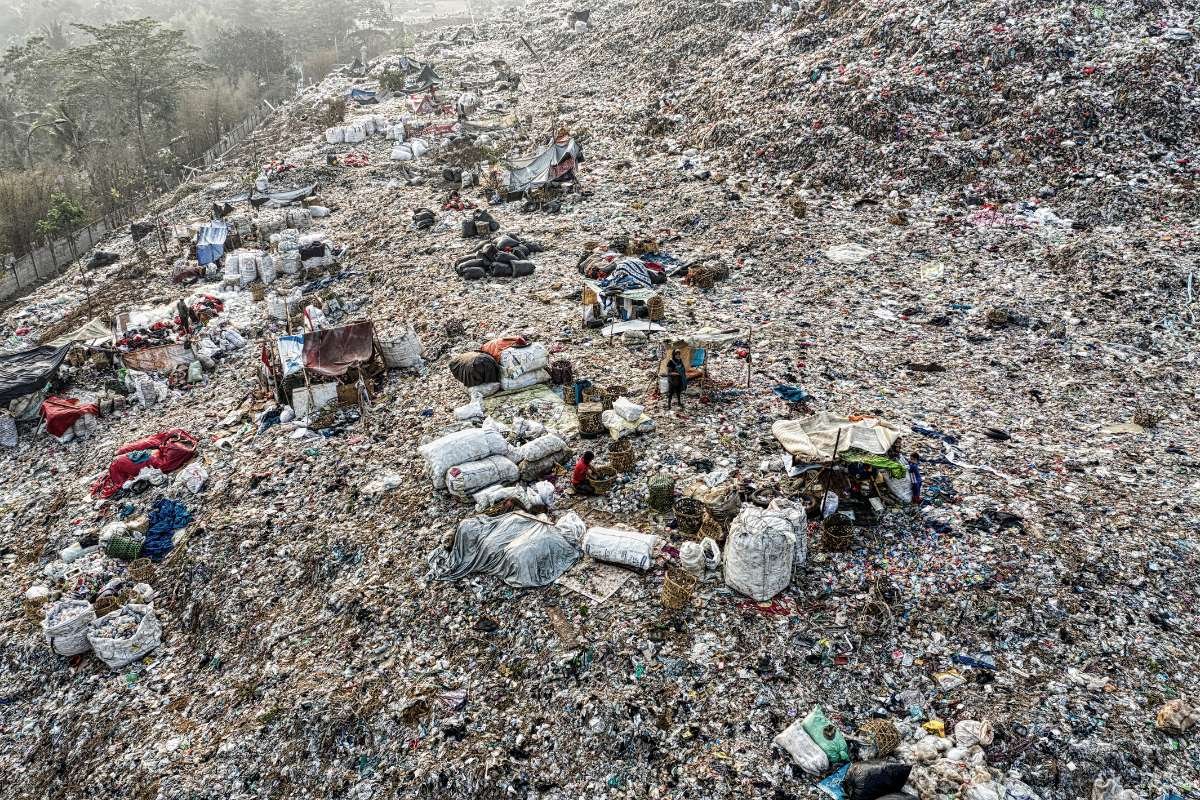Printing plays a significant role in our lives, from textbooks and newspapers to photos and office documents. However, it is crucial to consider the environmental impact of printing. As technology has advanced and become more accessible, the frequency and scale of printing have increased. This has led to concerns about printing practices’ sustainability in action and ecological consequences.
This article will look at the various aspects of the environmental impact of printing, shedding light on its effects and potential solutions.
1. Deforestation and Paper Production
The production of paper is one of the primary concerns when discussing the environmental impact of printing. The demand for paper leads to deforestation as vast areas of trees are cut down to make way for paper mills. Trees are vital for maintaining a healthy ecosystem, absorbing carbon dioxide, and providing oxygen. Deforestation disrupts this balance, contributing to climate change and loss of biodiversity.
To put the scale of paper production into perspective, it is estimated that approximately 35% of all harvested trees are used for paper production. This massive demand for wood pulp puts immense pressure on forests and can destroy habitats for various plant and animal species. Additionally, converting wood pulp into paper involves using chemicals, including chlorine compounds, which can harm the environment if not properly managed.
2. Energy Consumption in Printing
Another significant environmental issue of printing is the high energy consumption in producing and operating printing equipment. Printing presses, copiers, and other machines require electricity, often from non-renewable sources such as coal or natural gas. The excessive use of energy contributes to greenhouse gas emissions, exacerbating climate change.

To illustrate the impact of responsible ink and toner usage, consider that approximately 500 million ink cartridges are discarded annually. By recycling and refilling ink cartridges, not only can the number of cartridges sent to landfills be reduced, but also the energy and raw materials required to manufacture new cartridges. Remanufactured cartridges or eco-friendly alternatives can also help minimize the environmental impact of ink and toner production. You can also visit Sell Toner for more information.
3. Water Usage and Pollution
Printing processes also require substantial water for paper production and equipment maintenance. The extraction and treatment of water can lead to water scarcity and pollution. Additionally, the chemicals used in ink and toner production can contaminate water bodies if not properly managed, further endangering aquatic ecosystems.
Approximately 10,000 to 20,000 gallons of water are required to produce a single ton of paper. This massive water consumption strains freshwater resources, especially in water scarcity areas. Moreover, the wastewater generated during printing contains various pollutants, including dyes, heavy metals, and solvents, which can harm aquatic life and water quality.
4. Waste Generation and Disposal
Printing generates significant waste, including paper scraps, cartridges, and packaging materials. Improper disposal of waste can lead to landfill overcrowding and contribute to environmental pollution. Moreover, the decomposition of paper and ink can release methane, a potent greenhouse gas contributing to global warming.
Consider that in the United States alone, over 2 million tons of paper and paperboard were disposed of in landfills in 2020. This represents a significant missed opportunity for recycling and reducing the environmental impact of printing. Additionally, the improper disposal of ink and toner cartridges can lead to soil and water contamination, posing risks to health and the environment.
5. E-waste from Printing Equipment
The constant advancement of printing technology leads to the rapid obsolescence of printing equipment, resulting in electronic waste or e-waste. E-waste contains hazardous materials like lead, mercury, and cadmium, which can pollute soil and water if not properly managed. Recycling and responsible disposal of e-waste are essential to minimize its environmental impact and increase sustainability in action.

The Global E-waste Monitor 2020 reports that the world produced an all-time high of 53.6 million metric tons of electronic waste in 2019, but only 17.4% of it was recycled.The improper handling of e-waste can have severe consequences, as its hazardous substances can leach into the environment, contaminating soil, groundwater, and even the air. Implementing effective e-waste management strategies, such as recycling and proper disposal, is crucial to mitigate these environmental risks.
6. Carbon Footprint of Printing
It refers to the total amount of greenhouse gasses emitted throughout the printing process, including raw material extraction, production, transportation, and disposal. The reliance on fossil fuels for energy and the use of carbon-intensive materials contribute to the carbon footprint of printing. Reducing carbon emissions from printing activities is crucial in mitigating climate change.
To understand the carbon footprint of printing, consider that the production of a single sheet of paper emits approximately 2.5 grams of carbon dioxide. The carbon emissions quickly add up when multiplied by the billions of pages printed worldwide. Additionally, the transportation of printed materials and the disposal of waste contribute to the overall carbon footprint of the printing industry.
7. Sustainable Printing Practices
Fortunately, several measures can be taken to minimize the environmental impact of printing. One effective approach is adopting sustainable printing practices. This includes using eco-friendly paper made from recycled or certified sustainable sources. Recycled paper reduces the demand for new pulp, saving trees and reducing deforestation. Additionally, implementing double-sided printing and optimizing print settings can help conserve paper.
Sustainability in action in printing involves using vegetable-based inks instead of petroleum-based inks. Vegetable-based inks are made from renewable resources and contain fewer volatile organic compounds (VOCs), contributing to air pollution. Furthermore, recycling paper waste, properly disposing of ink and toner cartridges, and encouraging responsible printing habits among individuals and organizations are essential steps toward a more sustainable printing industry.
8. Digital Alternatives and Paperless Solutions
With the increasing use of digital technology, there are now options available that can greatly lessen the negative environmental effects of printing. Embracing digital alternatives such as e-books, online newspapers, and digital documents can help save paper and reduce energy consumption. Adopting paperless solutions in offices, schools, and homes can substantially reduce paper waste and associated environmental consequences.

Consider the benefits of digital alternatives: reading an e-book instead of a printed book saves approximately 25 pounds of CO2 emissions per year, eliminating the need for paper production, transportation, and disposal. Moreover, using cloud storage and digital collaboration tools can minimize the need for printing and physical document storage. Individuals and organizations can significantly reduce their environmental footprint by transitioning to digital alternatives and embracing paperless solutions.
9. Responsible Ink and Toner Usage
The choice of ink and toner cartridges also affects the environmental impact of printing. Opting for eco-friendly ink and toner from non-toxic and renewable materials can minimize environmental harm. Recycling and refilling ink cartridges can reduce waste generation and conserve resources.
To illustrate the impact of responsible ink and toner usage, consider that approximately 500 million ink cartridges are discarded annually. By recycling and refilling ink cartridges, not only can the number of cartridges sent to landfills be reduced, but also the energy and raw materials required to manufacture new cartridges. Remanufactured cartridges or eco-friendly alternatives can also help minimize the environmental impact of ink and toner production.
Conclusion
It is crucial to recognize and address the environmental impact of printing. From deforestation and energy consumption to water usage and waste generation, printing practices have far-reaching consequences for our planet. By adopting sustainable printing practices, embracing digital alternatives, responsibly managing waste, and making conscious choices, we can minimize the environmental footprint of printing. This requires a collective effort from individuals, businesses, and governments to prioritize sustainable practices throughout the printing industry.
Furthermore, raising awareness among individuals and organizations about the environmental impact of printing is essential. Educating users about responsible printing practices, such as only printing when necessary, using print preview to avoid unnecessary prints, and promoting digital sharing and archiving of documents, can contribute to a more sustainable approach.
Government regulations and policies can also play a significant role in reducing the environmental impact of printing. Setting environmental standards for the printing industry, promoting sustainable practices through incentives, and enforcing proper waste management and recycling regulations can encourage businesses to adopt more environmentally friendly printing methods.


















